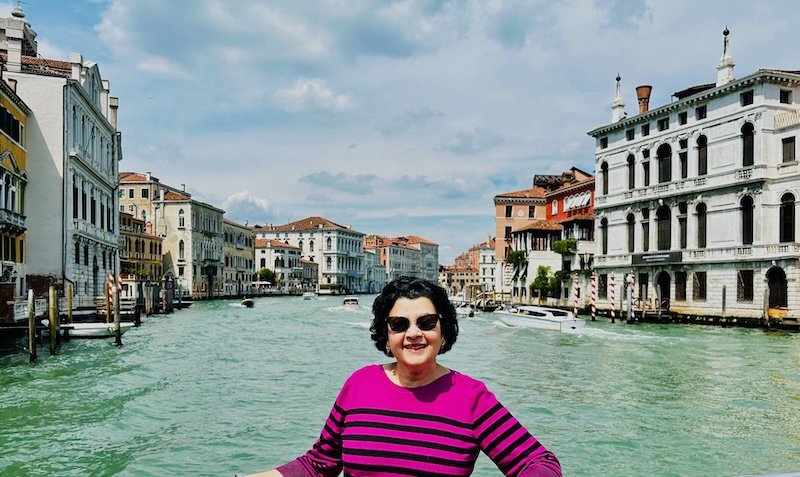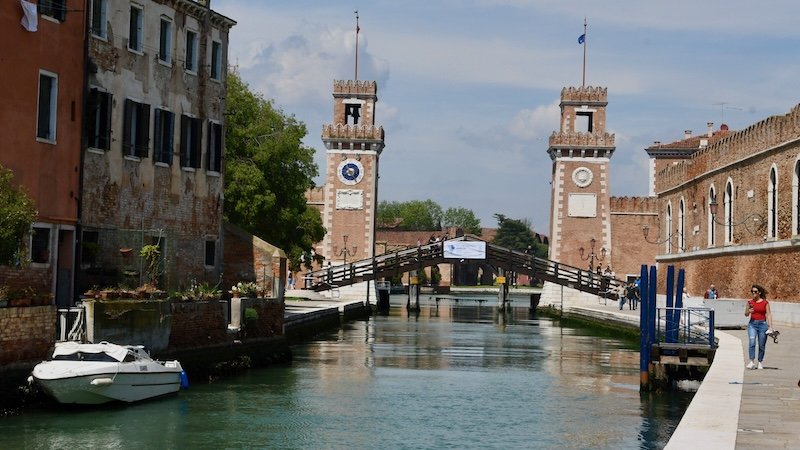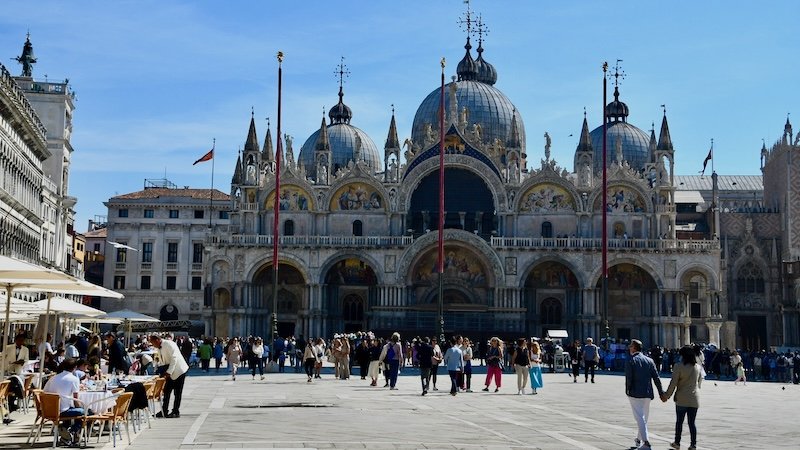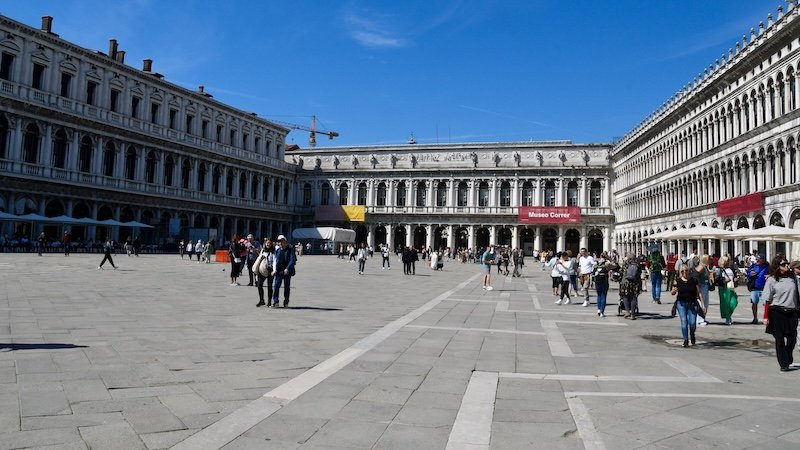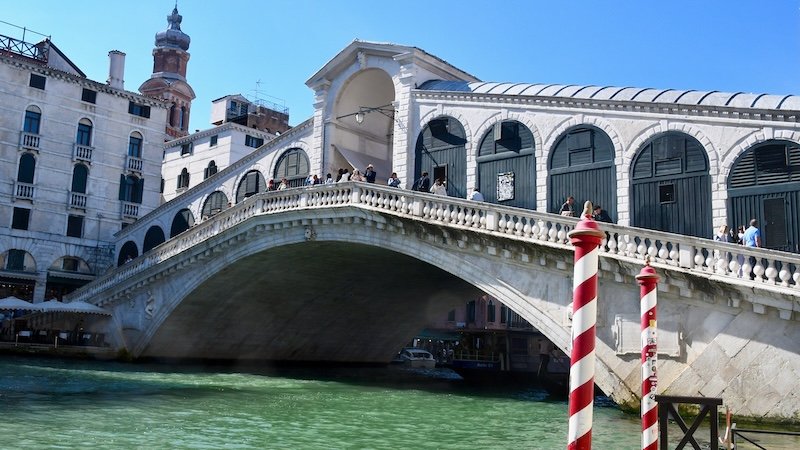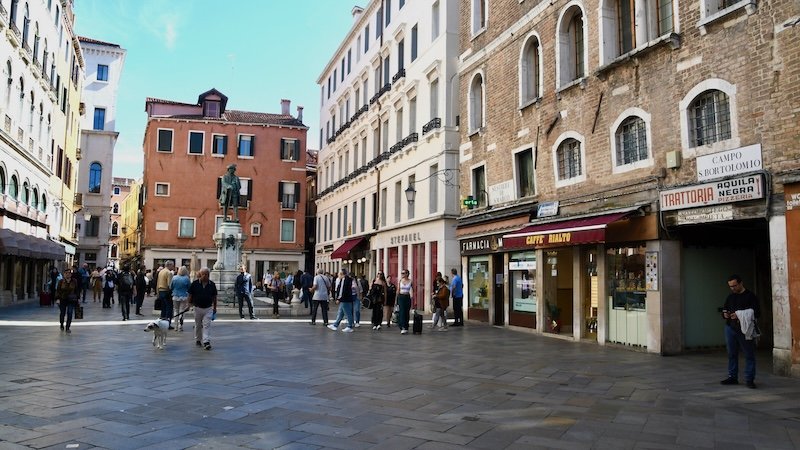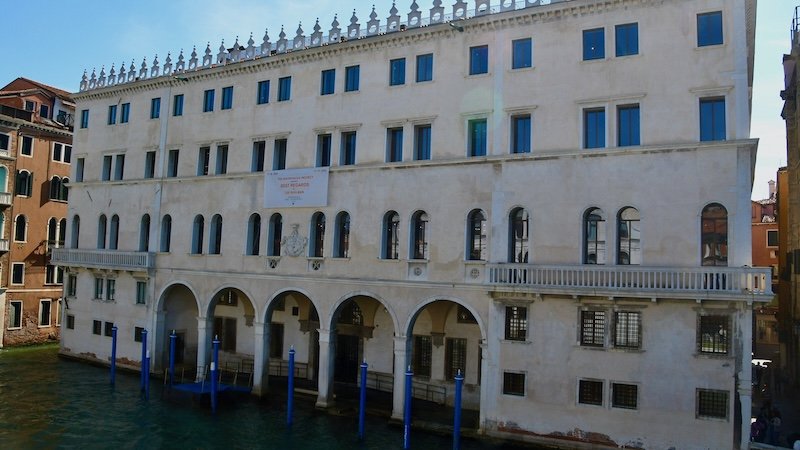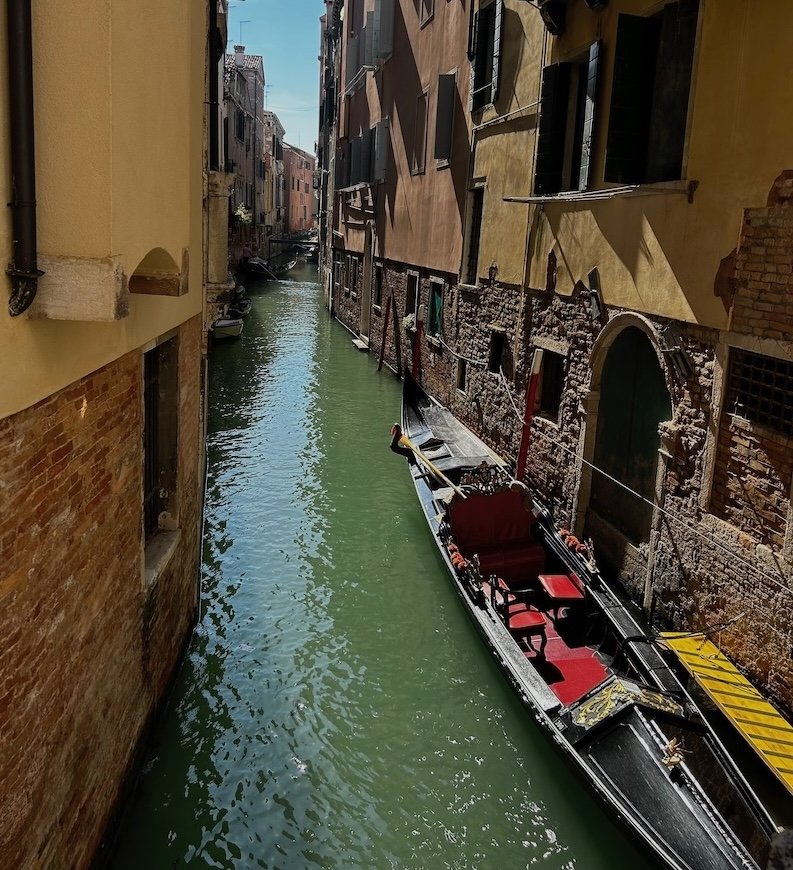Black Pepper Chicken In Venice
We were swept away by the romance of Venice as soon as we breathed its air. Revisiting the city after a gap of two decades, we had not been sure what to expect. We had heard all the complaints: Venice had become too touristy, too expensive, too crowded. But the moment we stepped out of the railway station and caught the vaporetto that carried us along the Grand Canal, we realised that Venice will always be La Serenissima, the Serene One, a title it has carried for centuries as one of the most beautiful and unique cities in the world. There is, truly, no other place like it.
As we admired the spectacular palazzos that line the canals it was hard to believe that this city had very humble beginnings. Venice was founded during the dying days of the Roman Empire in a most inauspicious location, surrounded by impenetrable marshes. Houses were built on pilings driven into the seabed, and the only way to reach them was by boat. However, the swamps provided an impregnable refuge from invaders. While the rest of Italy fell to barbarian tribes sweeping across Europe, Venice remained safe and part of the Byzantine empire based in Constantinople, which succeeded the Romans. To this day Venice feels different from other parts of Italy, for its culture, cuisine and architecture owe much to its Byzantine heritage.
Venetians are wedded to the sea. Quite literally, for in a thousand year-old ceremony the leader of the city sails into the surrounding lagoon every spring and throws a ring into the waters to renew the marriage vows. Under medieval law a husband owns his wife’s property, making this a very lucrative union. Sea trade was the source of Venetian wealth and the Arsenale, the dockyard that is still functioning today, produced a fleet of ships that dominated commercial life in the Mediterranean. In the Naval History Museum near the Arsenale we saw the Bucintoro, the gilded ceremonial barge used for the wedding.
Venetians acquired new manners and tastes from the Byzantines. When the ruler’s son married a Byzantine princess in the 11th century and brought her home, Venetians were horrified to note that she did not eat with her fingers as everyone else did, but used a fork. This was initially condemned as “an instrument of the devil”, but soon other people were using it too. The princess also brought along cooks who used a variety of spices such as pepper, cinnamon and ginger, that had not been used in Europe since Roman times. The Crusades had just begun and Europeans were travelling in large numbers to the Holy Land. They, too, were discovering the taste of spices and the feel of eastern silks, driving demand for eastern luxuries across Europe. Venice, with its iron grip on trade, was ideally situated to profit from this and grew enormously rich while building a formidable military force.
To glimpse what Venice was like at the height of its power we walked to the Piazza San Marco, which was the location of both the city’s government and its greatest church. The soaring red tower that stands in the square is visible from a distance, making it a convenient landmark when we got lost in Venice’s maze of narrow cobbled lanes. The piazza is surrounded on three sides by white arcades and on the fourth side by the Basilica of San Marco, a spectacular church built in the Byzantine style. Much of the basilica was built with sculptures, reliefs and pillars looted from Constantinople in the 13th century, marking the time that Venice broke free from Byzantine control and built its own maritime empire.
Venice grew rich importing spices that grew only along the south-western Malabar coast of India. Every year a fleet of ships would leave India and catch the monsoon winds to cross the Arabian sea and arrive in the Red Sea ports of Egypt. The cargo was transferred to camel caravans that carried it to Alexandria where Venetian merchants waited to load their ships and carry the spices home in time for the spice fair held every fall.
The Rialto Bridge was packed with tourists taking pictures when we strolled across it, but it was once the heart of commercial activity in Venice. In Shakespeare’s Merchant of Venice people ask “what news on the Rialto?”, for this is where merchants met to get the latest gossip and to strike deals. It was vital to be present on the Rialto if you wanted to do business in Venice.
Coming down from the Rialto we walked through the Campo San Bartolomio, an elongated plaza. This was where the spice market was held, aromatic piles of cinnamon, cardamom, pepper and ginger laid out on tables. Merchants from across Europe came here for the fall fair, buying bundles of spices to sell in cities across France and Germany in time for Christmas. We could almost smell the heady aroma of spices and hear the clamour of buyers haggling and sellers arguing, porters loading and unloading sacks, and the clinking of coins.
At one end of the Rialto, opening onto the Campo San Bartolomio, is the Fondaco dei Tedeschi, once the headquarters of the German merchants in Venice. The Germans were the biggest group of buyers in the city and this building housed their living quarters and warehouses. A manual written for Venetian merchants offered advice on which spices to buy, and in what quantities. For pepper they counselled that “you can procure any amount, for the Germans will buy whatever you have”. Pepper was by far the most popular condiment in Europe and made up more than 80 percent of all the spices that were sold in Venice.
Eating in Venice is always a pleasure, whether sitting in a cafe sampling cicchetti, the small snack sized plates beloved by Venetians, or trying a seafood platter in an elegant restaurant. The cuisine of Venice is still dominated by the seafood that is caught in the surrounding waters. Changes in European tastes over the centuries means that spices are no longer used as liberally as they were at one time, but the flavours are always exquisite.
The profits from the spice trade made Venice one of the richest places in Europe and paid for much of the Italian Renaissance. Today, when we admire the palaces and canals, the sculptures and paintings that make Venice such a magical place we should remember that it all started off with the humble grains of pepper carried from India’s Kerala coast.
In honour of all the sailors and spice traders who risked their lives and fortunes to carry pepper from the shores of India to the markets of the Middle East and Europe, and the cooks who used it to make exquisite dishes in every land through which they passed, here is a recipe from Kerala that shows how pepper can transform the flavour of any dish it touches.
Spice roasted succulent chicken, simmered gently in a pepper spiked, tamarind infused, coconut cream sauce, is so delicious it’s about to become your new favourite! Serve it with chapatis or dosas or make some Coconut Rice to use up that leftover can of coconut milk. Also check out Black Pepper Lamb and Black Pepper Shrimp for more delicious recipes using black pepper.
Black Pepper Chicken
1 1/4 lb boneless, skinless chicken thighs (about 8)
For the marinade:
1 tbsp oil
2 cloves garlic, grated or minced
1 inch piece ginger, grated or minced
20 fresh curry leaves, chopped
Salt to taste
1 tsp each, ground spices, divided: turmeric, coriander, cumin, dried fenugreek leaves (Kasoori methi), Kashmiri chili powder, garam masala
1 tbsp ground black pepper, divided
Or Substitute - 2 tbsp of Malabar Masala Powder
For The Curry:
2 tbsp oil
1/2 tsp black mustard seeds
20 fresh curry leaves
1 onion, chopped
2 cloves garlic, chopped
4 tbsp each: coconut cream, skimmed off the top of a can of premium coconut milk, tamarind extract* (see note)
2 tbsp chopped fresh coriander
Preheat oven to 420F. Line a baking tray with parchment.
Cut chicken into 1 inch bite sized pieces and place in a deep mixing bowl.
Add all the marinade ingredients as well as 1/2 tsp each of ground turmeric, coriander, cumin, dried fenugreek leaves, kashmiri chili powder, garam masala and 1/2 tbsp of the ground black pepper or 1 tbsp of the Malabar Masala Powder. Mix well with the chicken and allow to marinate for 1/2 an hour at room temperature or for longer in the fridge.
Spread chicken pieces evenly on baking tray and roast in oven for 20 min. Switch off the oven but let the chicken roast a bit more in the residual heat for another 10 min.
Meanwhile, prepare the curry.
Warm oil in deep skillet set over medium heat and add the mustard seeds, letting them splutter for a few seconds.
Add the fresh curry leaves and garlic, saute for a few seconds.
Add onions and saute for 5-7 min until lightly browned and softened.
Add salt to taste and the remaining 1/2 tsp of the ground spices - turmeric, coriander, cumin, dried fenugreek leaves, kashmiri chili powder, garam masala and 1/2 tbsp of the ground black pepper or 1 tbsp of the Malabar Masala Powder. Saute for 1 min.
Add the roasted chicken and mix well for 1 min.
Reduce heat to low and add the tamarind extract and coconut cream, mixing well.
Cover and cook for 5 - 7 min for flavours to blend. The sauce should be very thick and sticking to the chicken at this point. If it is not, then uncover skillet, turn up the heat to medium and cook off some of the excess sauce for a few minutes until it is thickened.
Fold in the chopped fresh coriander and serve.
Serves Four
*Note: To make tamarind extract, soak a small walnut sized lump of seedless tamarind in 1/2 cup of hot water. Mash with a fork and let soften for 15 min or longer. Place a fine mesh sieve over a bowl and strain this mixture, pressing against the solids to extract all the liquid. Discard solids from the sieve. Reserve tamarind extract for use in the recipe and refrigerate extras for another recipe.
**Note: If fresh curry leaves are not available, use dried leaves or curry leaf powder.
